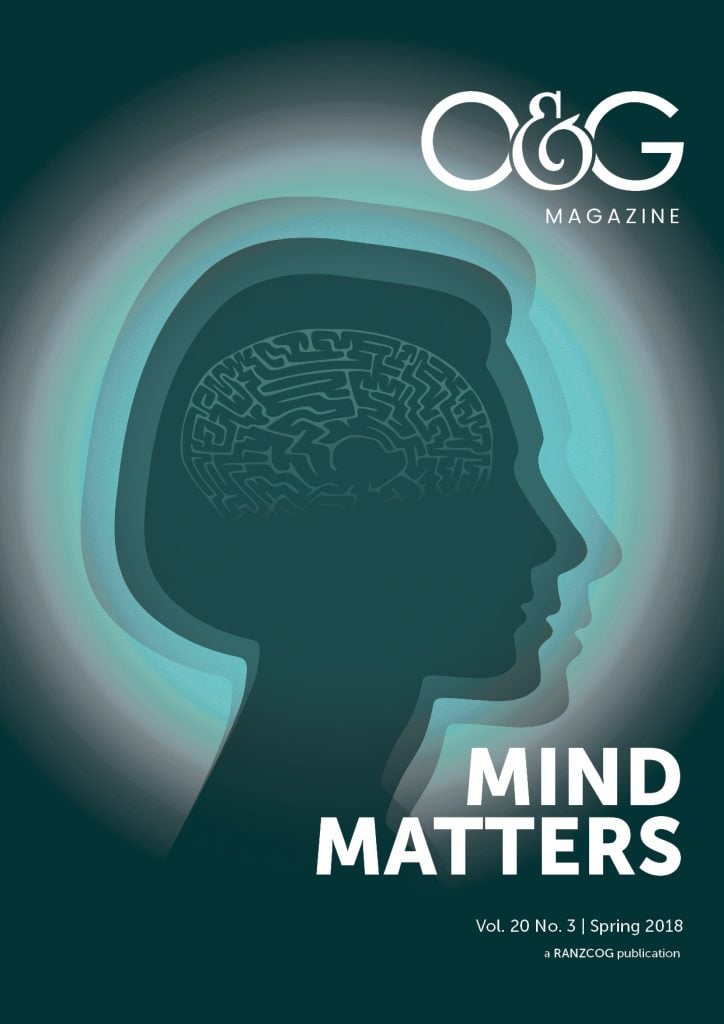Dr William Hugh Patterson
1928–2018
Hugh lived an industrious life and his contributions were felt in the practice of medicine, military service and medical politics.
He was born in Sydney and, in 1946, matriculated into medicine at the University of Sydney. Here he met Pamela Nisbet, another medical undergraduate. Pamela became a GP. They graduated in 1952 and married the following year.
Hugh gained early experience at the Royal Alexandra Hospital for Children, Launceston General Hospital in Tasmania and Lewisham Hospital in Sydney. In 1957, he travelled to the UK and sat the examinations for the Royal College of Obstetricians and Gynaecologists (RCOG), becoming a Member in 1958. On his return, and after several years in general practice, he was appointed to Royal North Shore Hospital and the Royal Hospital for Women in Paddington. He held the positions of Honorary or Visiting Medical Officer at both hospitals for three decades. Hugh was elected a Fellow of RCOG in 1974, a Fellow of the American College of Surgeons in 1976 and a Fellow of the Royal Australian College of Obstetricians and Gynaecologists in 1979. Following the amalgamation of the Australian and New Zealand Colleges, Hugh was admitted as a Fellow of RANZCOG in 1998. For most of his career, he was a clinical lecturer at the University of Sydney and the University of New South Wales.
Hugh’s major clinical interest was the investigation and treatment of pre-invasive cancer of the cervix. He was one of the first gynaecologists to use a colposcope for this purpose in a Sydney private practice. He was an early leader in the development of Papanicolou smear screening; and after further studies in America, his practice was one of the first in Sydney to offer carbon dioxide laser in the treatment of pre-cancerous disease of the lower genital tract. In later years, he was appointed Chair of the Department of Gynaecological Oncology at Paddington. He practised in both private and public sectors devoted much of his time to treatment of the needy and vulnerable.
In retirement, he would occasionally remark that some of his more satisfying work had been in the treatment of patients in the state psychiatric system of the 1960s. These patients had been neglected and many suffered chronic and gross pathologies. Hugh was one of the first appointed to a surgical unit in what was then North Ryde Psychiatric Hospital. He quickly established an outpatient service that extended from North Ryde to Gladesville Hospital, Callan Park, Broughton Hall and Rydalmere hospitals. He treated hundreds of disadvantaged patients.
Hugh was commissioned as a Captain in the Citizen Military Forces in 1953. In the mid 1960s, the number of women in the Royal Australian Air Force (RAAF) was rising and he saw greater scope to apply his skills in the RAAF. He transferred in 1965 and provided specialist services to female members of the RAAF. He assisted in the development and supervision of an obstetrics section at No. 4 RAAF Hospital at Butterworth in Penang, Malaysia. He was promoted several times and in 1976 achieved the rank of Group Captain and consultant gynaecologist to the Director-General of Air Force Health Services, a position he held until retirement in 1985. After three decades of service, he was awarded the Reserve Forces Decoration with two clasps and the National Medal.
Hugh also found time to serve his profession. He was a member of the Australian Medical Association for 40 years, during which time he served as a Councillor on the NSW committee from 1982–87, state President from 1985–86 and a Federal Councillor from 1987–88. In 1985, he was involved in difficult negotiations with both state and federal governments following the acrimonious 1984 Medicare dispute. Hugh’s leadership as NSW President proved key to a highly successful arbitration of sessional rates for visiting practitioners and specialists.
Other valuable contributions Hugh made include: a stint with Specialist Aerial Medical Services, in which he treated the Aboriginal and Torres Strait Islander population in the far west of NSW; the education of midwives; attempts to further the careers of female specialists who were under-represented in his field; and various non-clinical responsibilities in disciplinary and standards bodies. After a lengthy illness, Hugh died on 3 May 2018.
Hugh’s wife, Pamela, died in 2010. Hugh is survived by his sons David and Malcolm.





Leave a Reply